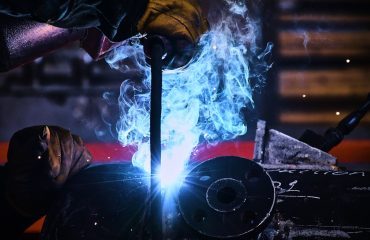body {
font-family: sans-serif;
line-height: 1.6;
}
h1, h2, h3 {
color: #333;
}
img {
max-width: 100%;
height: auto;
}
Hot rolled flat bars are a fundamental component in numerous industries, providing strength, durability, and versatility for a wide range of applications. Understanding their properties and manufacturing process is crucial for engineers, designers, and anyone involved in material selection. This comprehensive guide will delve into the world of hot rolled flat bars, exploring their key characteristics and applications.
The Manufacturing Process: From Ingot to Bar
The journey of a hot rolled flat bar begins with a molten steel ingot. This ingot undergoes a series of transformative processes to achieve its final form. First, it’s heated to a high temperature – typically above its recrystallization temperature – in a reheating furnace. This high temperature allows the steel to become more malleable, making it easier to shape. Next, the heated ingot is passed through a rolling mill, a series of powerful rollers that progressively reduce the thickness and width of the steel, elongating it into a long bar. This process is repeated multiple times, with the bar being reheated as needed to maintain its malleability. The final rolling pass shapes the bar into its desired dimensions and surface finish. The hot rolled bar is then cooled, often in a controlled manner, to achieve the desired mechanical properties.
Mechanical Properties and Chemical Composition: Understanding the Strength
The mechanical properties of hot rolled flat bars are significantly influenced by their chemical composition and the rolling process. Common alloying elements like carbon, manganese, silicon, and chromium are added to the steel to enhance its strength, hardness, and other desirable characteristics. The amount of each element determines the grade of the steel, which in turn dictates its mechanical properties. Key properties include tensile strength (the ability to resist being pulled apart), yield strength (the point at which the material begins to deform permanently), elongation (the amount of stretching before breaking), and hardness (resistance to indentation). Hot rolling imparts a characteristic microstructure to the steel, influencing its toughness and ductility. Specific properties are detailed in the relevant material specifications, such as ASTM standards.
Applications Across Diverse Industries: Versatility in Action
The versatility of hot rolled flat bars makes them indispensable across a wide spectrum of industries. In construction, they are used extensively in structural components, reinforcing bars (rebar), and various architectural elements. The automotive industry utilizes them in chassis components, frames, and other structural parts. Manufacturing employs hot rolled flat bars in machinery components, tooling, and custom fabricated parts. The agricultural sector uses them in equipment frames and implements. Even the energy sector utilizes these bars in various applications, demonstrating their adaptability and robustness.
Advantages and Disadvantages: Weighing the Pros and Cons
Hot rolled flat bars offer several advantages. Their high strength-to-weight ratio makes them efficient for structural applications. The manufacturing process is relatively cost-effective, resulting in a competitively priced material. Their availability in a wide range of sizes and grades provides flexibility in design and application. However, hot rolled bars do have some disadvantages. Their surface finish is typically rougher compared to cold-rolled counterparts, potentially requiring further processing for specific applications. The inherent internal stresses introduced during rolling can affect dimensional stability in some cases. Finally, the heat treatment required for certain applications can add to the overall cost.
Choosing the Right Grade: Navigating Material Specifications
Selecting the appropriate grade of hot rolled flat bar is crucial for ensuring the structural integrity and performance of the final product. Various standards, such as ASTM A36, A572, and others, define the chemical composition and mechanical properties of different grades. These standards provide comprehensive information on tensile strength, yield strength, elongation, and other crucial parameters. Understanding these specifications is vital for engineers and designers to choose the right material for their specific needs. Factors to consider include the required strength, ductility, weldability, and corrosion resistance. Consulting with a materials specialist can be beneficial for complex applications or when dealing with stringent requirements.
In conclusion, hot rolled flat bars are a robust and versatile material with a wide range of applications. Understanding their manufacturing process, mechanical properties, and advantages and disadvantages allows for informed material selection, leading to successful and efficient project outcomes. Always refer to relevant material specifications and standards to ensure compliance and optimal performance.
SEO-Friendly Tags:
- Hot Rolled Flat Bars
- Steel Flat Bars
- Hot Rolled Steel
- Flat Bar Applications
- Steel Bar Grades




